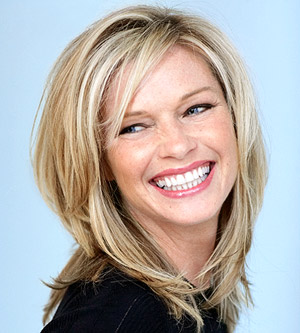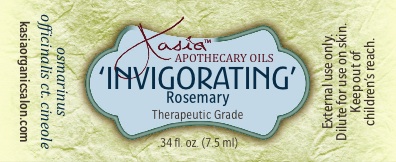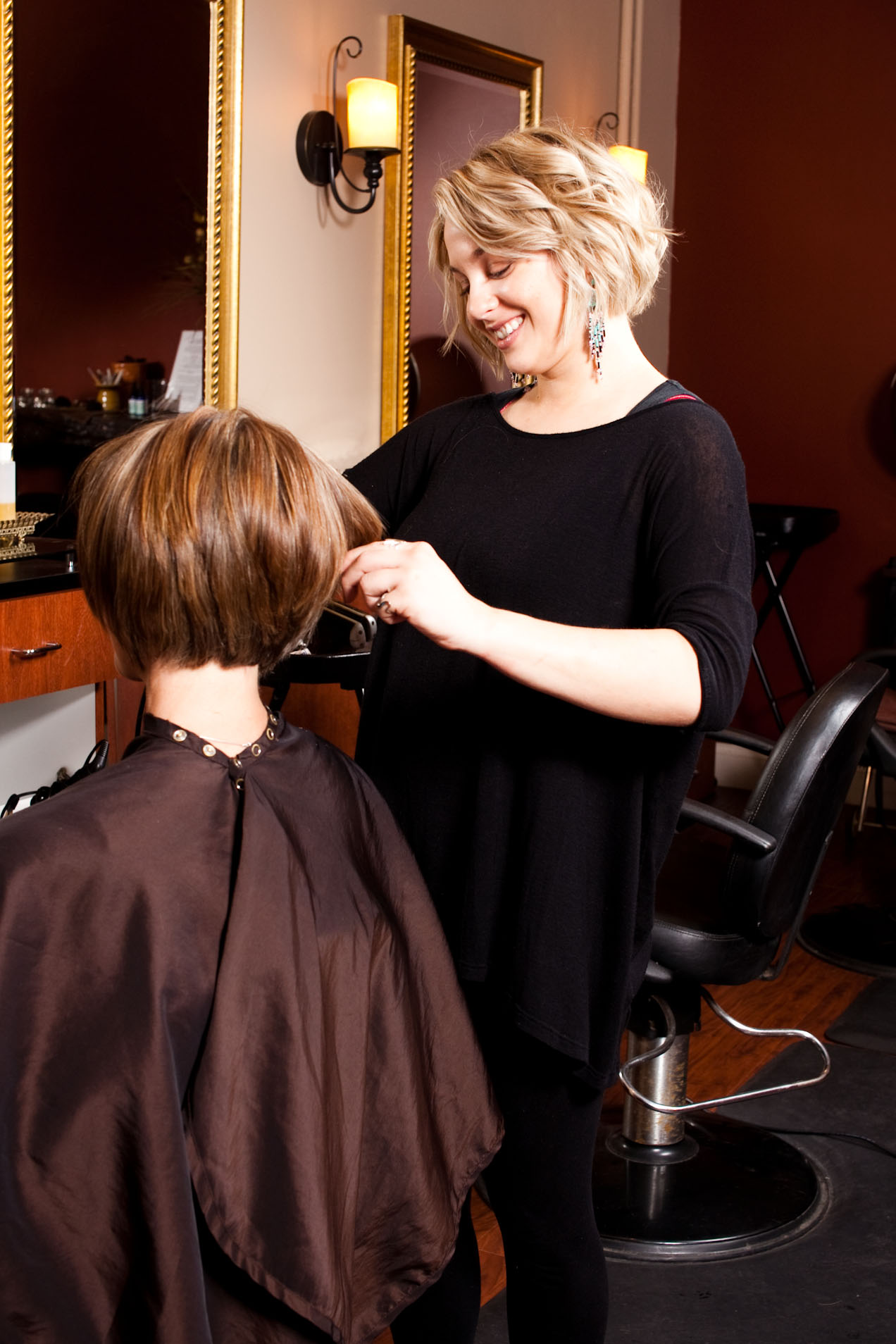 Societies throughout history have employed various forms of cosmetics and toiletries to improve appearance, scent and health. Ancient civilizations used cosmetics for purposes as varied as religious rituals and class demarcation. Though used for different purposes, cosmetics have remained a historical constant from the Ancient Egyptians to modern-day Americans.
Societies throughout history have employed various forms of cosmetics and toiletries to improve appearance, scent and health. Ancient civilizations used cosmetics for purposes as varied as religious rituals and class demarcation. Though used for different purposes, cosmetics have remained a historical constant from the Ancient Egyptians to modern-day Americans.
From its earliest days, the United States has been at the forefront of cosmetic innovation, entrepreneurship and regulation. The timeline below represents a brief history of the important developments, advances, and American usage trends in cosmetics, as well as a regulatory history of cosmetics in the United States.
1848:
Congress passes the Drug Importation Act, the first such federal control over drugs in the United States, which mandates the U.S. Customs Service inspection of imported drugs to prevent entry of adulterated or contaminated drugs from overseas.
1862:
President Abraham Lincoln appoints chemist Charles M. Wetherill to serve in the new Department of Agriculture. This laid the foundation for the Bureau of Chemistry, the forbearer of the U.S. Food and Drug Administration (FDA).
1880:
Peter Collier, the chief chemist in the U.S. Department of Agriculture, recommends that Congress pass a national food and drug law. The bill is eventually defeated, but precipitated the introduction of more than 100 food and drug laws in Congress over the next 25 years.
1886:
David McConnell founds the California Perfume Company (CPC) which was, strangely, then located in New York. Over time, the company continues to grow and experience great success, selling five million units in North America during World War I alone. In 1928, CPC sells its first products — a toothbrush, a talcum and a vanity set — under the name by which it is commonly known today: Avon.
1894:
The number of U.S. firms manufacturing perfumery and toilet goods increases from 67 in 1880 to 262 in 1900. In 1894, the extremely competitive nature of the industry drives a group led by New York perfumer Henry Dalley to found the Manufacturing Perfumers’ Association. The group evolved over time and in 1970 changed its name to the Cosmetic, Toiletry, and Fragrance Association (CTFA).
1900:
By 1900, cosmetics are in widespread use in nearly all societies around the world, including the United States.
1904:
Max Factor, a Polish-American cosmetician and former cosmetic expert for the Russian royal family, begins selling his rouges and creams in the United States at the St. Louis World’s Fair.
1907:
Eugene Schueller, a young French chemist, invents modern synthetic hair dye which he calls “Auroele.” In 1909, Schueller names his company Societe Francaise de Teintures Inoffensives por Cheveux (Safe Hair Dye Company of France) — the company that today has become L’Oréal.
1910s:
American women begin to fashion their own form of mascara by applying beads of wax to their eyelashes.
1913:
Chemist T.L. Williams creates Maybelline Mascara for his sister, Mabel.
1914:
Because of the onset of World War I, American women gain more disposable income and discretion over its use, leading to a boom in domestic makeup sales.
1919:
Congress passes the 18th Amendment to the U.S. Constitution, commonly known as Prohibition. As originally drafted, the amendment might have outlawed perfumes and toilet goods because of their alcohol content. However, the Manufacturing Perfumers’ Association (MPA) mobilized its forces and Congress clarified the language to exempt products that are unfit for use as beverages.
1920:
The flapper look comes into fashion for the first time, and with it comes increased cosmetic use: dark eyes, red lipstick, red nail polish, and the suntan, which is invented as a fashion statement by Coco Chanel.
Cosmetics and fragrances are manufactured and mass marketed in America for the first time.
1922:
The Manufacturing Perfumers’ Association (MPA) changes its name to the American Manufacturers of Toilet Articles (AMTA).
1924:
In U.S. v. 95 Barrels Alleged Apple Cider Vinegar, the Supreme Court holds that the Food and Drugs Act prohibits all statements, designs or devices on a product’s label that may mislead or deceive, even if technically true.
1920-1930:
The first liquid nail polish, several forms of modern base, powdery blushes and the powder compact are introduced.
1928:
Max Factor, now living in Hollywood, develops and introduces pancake makeup because of the adjustments required to best capture faces on film.
1930:
Due to the influence of movie stars, the Hollywood “tan” look emerges and adds to the desire for tanned skin made popular first by Coco Chanel.
1930:
Max Factor unveils the first lip-gloss.
1932:
In the midst of the Great Depression, brothers Charles and Joseph Revson, along with chemist Charles Lachman, found Revlon. The founders had discovered a unique manufacturing process for nail enamel, using pigments instead of dyes. This innovation ultimately led to Revlon being a multimillion dollar corporation within six years.
1936:
Eugene Schueller, founder of L’Oréal, invents sunscreen.
1938:
Congress passes the Federal Food, Drug, and Cosmetic (FD&C) Act, implementing the following new measures:
- Cosmetics and therapeutic devices were to be regulated for the first time.
- Drug manufacturers were required to provide scientific proof that new products could be safely used before putting them on the market.
- Colors were required to be certified as harmless and suitable by the FDA for their use in cosmetics.
- Factory inspections were first authorized.
- Cosmetics and medical devices, which the Post Office Department and the Federal Trade Commission had overseen to a limited extent prior to 1938, were put under FDA authority.
1940 and World War II:
Leg makeup is developed in response to shortages of stockings.
1940:
The FDA is transferred from the Department of Agriculture to the Federal Security Agency. Walter G. Campbell is appointed as the first Commissioner of Food and Drugs.
1944:
Congress passes the Public Health Service Act which, among other areas, covers the regulation of biological products.
1950:
The Modern Era of the cosmetics business begins. Artificial skin tanning aids are developed, and television advertising is first implemented in earnest. Companies such as Proctor & Gamble begin to sponsor daytime television programs that will eventually be called “soap operas.”
1952:
Mum, the first company to commercially market deodorant, launches the first roll-on deodorant, which is inspired by the design of another recently invented product — the ballpoint pen.
1955:
Crest, the first toothpaste with fluoride clinically proven to fight cavities, is introduced.
1958:
FDA publishes in the Federal Register its first list of substances Generally Recognized As Safe (GRAS), which contains nearly 200 substances.
1960:
Congress passes the Color Additive Amendment, which requires manufacturers to establish the safety of color additives in foods, drugs, and cosmetics. The Delaney provision prohibits the approval of any color additive shown to induce cancer in humans or animals. The FDA attempted to interpret the new law as applying to every ingredient of color-imparting products, such as lipstick and rouge, but the courts rebuffed this proposal.
1960:
False eyelashes became popular. “Natural” products based on botanical ingredients, such as carrot juice and watermelon extract were introduced.
1962:
President John F. Kennedy proclaims the Consumer Bill of Rights in a message to Congress, in which he includes the right to safety, the right to be informed, the right to choose and the right to be heard.
1965:
Aerosol deodorant is introduced.
1966:
Congress enacts the Fair Packaging and Labeling Act which requires all consumer products in interstate commerce to be honestly and informatively labeled, with FDA enforcing provisions on foods, drugs, cosmetics and medical devices.
1970:
The Toilet Goods Association (TGA) changes its name to the Cosmetic, Toiletry, and Fragrance Association (CTFA). The environmental movement brings challenges to the cosmetic and fragrance industry. The use of some popular ingredients is banned following the enactment of endangered species protection legislation. Some examples include musk and ambergris.
1976:
The CTFA, with the support of the FDA, establishes the Cosmetic Ingredient Review (CIR) Expert Panel. The goal of the CIR is to bring together worldwide published and unpublished data on the safety of cosmetic ingredients, and for an independent panel to subsequently review that data. The seven-member panel consists of scientists and physicians from the fields of dermatology, pharmacology, chemistry and toxicology. The members are selected by a steering committee and publicly nominated by government agencies, industry, and consumers. The panel thoroughly reviews and assesses the safety of ingredients used in cosmetics in an open, unbiased, and expert manner, and ultimately publishes the final results in the peer-reviewed International Journal of Toxicology. Within five years of its founding, the CIR had reviewed 216 commonly used ingredients. To date, CIR has evaluated 1,285 ingredients and it continues to receive praise from regulators and consumers alike for its efforts to ensure product safety. These reviewed ingredients represent X% of the ingredients most commonly used in cosmetics.
The 1980s:
Concerns about contaminated makeup emerged late in the decade. An FDA report in 1989 found that more than five percent of samples collected from counters in department stores were contaminated with mold, fungi, and pathogenic organisms. Additionally, manufacturers began to offer products labeled “hypoallergenic” or “natural.”
1999:
The first ever Cosmetics Harmonization and International Cooperation (CHIC) meeting is held in Brussels, Belgium. At the conference, representatives from the U.S. FDA; the Japanese Ministry of Health, Labour and Welfare (MHLW); Health Canada; and the Directorate General III of the European Union discuss broad cosmetics topics, including: basic safety substantiation, exchange of data and information, development of an international alert system and an international memorandum of cooperation.
2006:
The CTFA develops the Consumer Commitment Code, which goes beyond the requirements of the law to highlight the proactive and responsible approach to product safety supported by cosmetic companies. The code gives a greater degree of assurance of safety for consumers and transparency for government regulators.
2007:
The Cosmetic, Toiletry and Fragrance Association (CTFA) changes its name to the Personal Care Products Council ( the “Council”). The environmental health movement brings challenges to the personal care products and cosmetics industry. The Council supports numerous legislative initiatives in the states of California, Massachusetts and New York, and launches Cosmeticsinfo.org to assist consumers in understanding the products they use and the industry record of safety in the formulation of those products.
Civilizations have used forms of cosmetics — though not always recognizable to cosmetics users today — for centuries in religious rituals, to enhance beauty, and to promote good health. Cosmetic usage throughout history can be indicative of a civilization’s practical concerns, such as protection from the sun; class system; or of its conventions of beauty.
The timeline below represents a brief history of cosmetics usage, beginning with the Ancient Egyptians in 10,000 BCE up through the beginning of the 20th Century.
COSMETICS IN THE ANCIENT WORLD
10,000 BCE:
Men and women in Egypt use scented oils and ointments to clean and soften their skin and mask body odor. Cosmetics are an integral part of Egyptian hygiene and health. Oils and creams are used for protection against the hot Egyptian sun and dry winds. Myrrh, thyme, marjoram, chamomile, lavender, lily, peppermint, rosemary, cedar, rose, aloe, olive oil, sesame oil, and almond oil provide the basic ingredients of most perfumes that Egyptians use in religious ritual.
4000 BCE:
Egyptian women apply galena mesdemet (made of copper and lead ore) and malachite (bright green paste of copper minerals) to their faces for color and definition. They employ a combination of burnt almonds, oxidized copper, different-colored coppers ores, lead, ash, and ochre — together called kohl — to adorn the eyes in an almond shape. Women carry cosmetics to parties in makeup boxes and keep them under their chairs.
3000 BCE:
Chinese people began to stain their fingernails with gum arabic, gelatin, beeswax, and egg. The colors used represent social class: Chou dynasty royals wear gold and silver, with subsequent royals wearing black or red. Lower classes are forbidden to wear bright colors on their nails.Grecian women paint their faces with white lead and apply crushed mulberries as rouge. The application of fake eyebrows, often made of oxen hair, is also fashionable.
1500 BCE:
Chinese and Japanese citizens commonly use rice powder to make their faces white. Eyebrows are shaved off, teeth painted gold or black and henna dyes applied to stain hair and faces.
1000 BCE:
Grecians whiten their complexion with chalk or lead face powder and fashion crude lipstick out of ochre clays laced with red iron.
EARLY COSMETICS
100 AD:
In Rome, people put barley flour and butter on their pimples and sheep fat and blood on their fingernails for polish. In addition, mud baths come into vogue, and some Roman men dye their hair blond.
300-400 AD:
Henna is used in India as a hair dye and in mehndi, an art form in which complex designs are painted on to the hands and feet, especially before a Hindu wedding. Henna is also used in some North African cultures.
COSMETICS IN THE MIDDLE AGES
1200 AD:
As a result of the Crusades, perfumes are first imported to Europe from the Middle East.
1300 AD:
In Elizabethan England, dyed red hair comes into fashion. Society women wear egg whites over their faces to create the appearance of a paler complexion. Yet, some thought cosmetics blocked proper circulation and therefore posed a health threat.
RENAISSANCE COSMETICS
1400 – 1500 AD:
In Europe, only the aristocracy use cosmetics, with Italy and France emerging as the main centers of cosmetics manufacturing. Arsenic is sometimes used in face powder instead of lead.The modern notion of complex scent-making evolves in France. Early fragrances are amalgams of naturally occurring ingredients. Later, chemical processes for combining and testing scents supersede their arduous and labor-intensive predecessors.
1500-1600 AD:
European women often attempt to lighten their skin using a variety of products, including white lead paint. Queen Elizabeth I of England was one well-known user of white lead, with which she created a look known as “the Mask of Youth.” Blonde hair rises in popularity as it is considered angelic. Mixtures of black sulphur, alum, and honey were painted onto the hair and left to work in the sun.
19TH AND EARLY 20TH CENTURY COSMETICS
1800 AD:
Zinc oxide becomes widely used as a facial powder, replacing the previously used deadly mixtures of lead and copper. One such mixture, Ceruse, made from white lead, is later discovered to be toxic and blamed for physical problems including facial tremors, muscle paralysis, and even death.
Queen Victoria publicly declares makeup improper. It is viewed as vulgar and acceptable only for use by actors.
1900 AD:
In Edwardian Society, pressure increases on middle-aged women to appear as young as possible while acting as hostesses. Increased, but not completely open, cosmetic use is a popular method of achieving this goal.
Beauty salons increase in popularity, though patronage of such salons is not necessarily accepted. Because many women are loathe to admit that they needed assistance to look young, they often entered salons through the back door.
_______________________
This information was originally published on the Cosmeticsinfo.org website.
Cosmeticsinfo.org is an information Web site that includes factual, scientific information on ingredients most commonly used in cosmetics and personal care products in the United States. The Personal Care Products Council (the Council) and its member companies sponsor this Web site to provide consumers with easily accessible comprehensive safety information on cosmetics and personal care products and to help consumers make informed purchases.



 Rachel Dowley, before and after her severe reaction to hair dye. Caters News / Zuma Press
Rachel Dowley, before and after her severe reaction to hair dye. Caters News / Zuma Press

 Societies throughout history have employed various forms of cosmetics and toiletries to improve appearance, scent and health. Ancient civilizations used cosmetics for purposes as varied as religious rituals and class demarcation. Though used for different purposes, cosmetics have remained a historical constant from the Ancient Egyptians to modern-day Americans.
Societies throughout history have employed various forms of cosmetics and toiletries to improve appearance, scent and health. Ancient civilizations used cosmetics for purposes as varied as religious rituals and class demarcation. Though used for different purposes, cosmetics have remained a historical constant from the Ancient Egyptians to modern-day Americans.